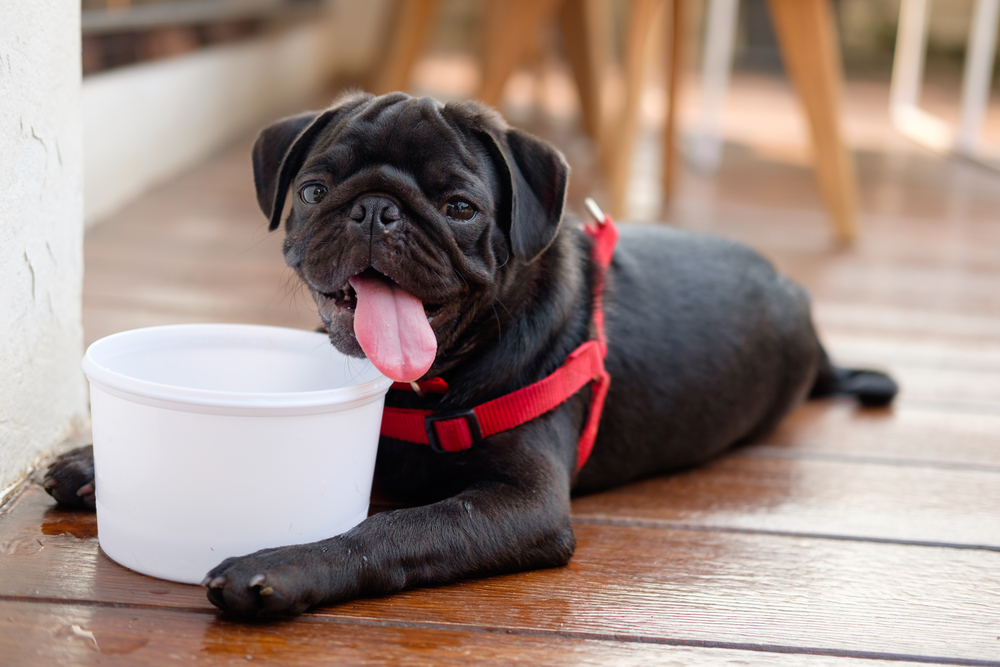As the temperatures soar and summer fun is on the rise, it’s time to get serious about heat safety and pets. Trust me, as a dog, I know a thing or two about the effects of hot temps on pets. Hi, I’m Fred, the English bulldog, and I’m here to tell you what you need to know to keep your furry friends safe this summer.
First of all, let’s sort out some definitions. The terms heat exhaustion, heatstroke, and overheating are often intermingled, but what do they mean? In reference to the body, they mean:
- Overheating — This simply indicates a general excess in body temperature.
- Heat exhaustion — Heat exhaustion describes many of the clinical signs associated with overheating, and typically occurs while exercising excessively in hot environments.
- Heatstroke — When heat exhaustion progresses, the body temperature rises to dangerous levels, leading to life-threatening heatstroke, which involves multi-organ failure and cardiac arrest.
#1: Heatstroke signs come on suddenly
Panting is generally the first sign that your pet may be overheated. Most of my four-legged friends have sweat glands only in their paws, which means that we cannot dissipate heat effectively only by sweating. Instead, we rely on evaporative cooling techniques, like panting or licking our fur, to keep us cool. While it is normal for dogs to pant comfortably, it should not be excessive. It is typically abnormal for cats to pant, so if you observe this, contact Twin Maples Veterinary Hospital immediately. There are many other signs of heatstroke you should be aware of, including:
- Drooling
- Vomiting
- Diarrhea
- Unwillingness to move
- Lack of coordination
- Elevated core body temperature
#2: Some of us are more vulnerable in the heat
Case in point, me. As a brachycephalic (i.e., flat-nosed) breed, my snout is naturally shortened, forcing many of my facial structures to overcrowd and block my airway. This can make it difficult for me to breathe at any time, but hot weather makes this especially problematic, because I need to pant more. A few of my friends are also good examples of pets who are more prone to overheating:
- Shadow, the 13-year-old golden retriever, whose age puts him at risk
- Betsy, the obese beagle, whose weight puts her at risk
- Fiddlesticks, the Siamese cat, whose kidney and heart disease put her at risk
#3: The inside of a car is never safe for me on warm days
Don’t, for a second, think it is OK to leave me inside a car when the weather is hot. On a mild, 70-degree day, a car’s interior still can reach upward of 90 degrees in only 10 minutes! Imagine how hot the car will be if you’re gone for 30 minutes. Trust me, that quick trip to grab a few groceries, or return that pair of shoes, is not worth it. And, don’t think that cracking the windows a few inches will help—it won’t.
#4: Sometimes, I really should stay home
We know you want us to join the fun, but sometimes the safest place for us is at home. If you are planning an outing for me, plan accordingly:

- Check for shade — Ensure there will be plenty of shade where we’re headed, so I can stay cool and comfortable.
- Pack pet supplies — Pack the bags with plenty of water, water bowls, towels, and a rectal thermometer for me, in case I start showing signs of overheating or dehydration.
- Check the weather — Check the forecast thoroughly, including the temperature and humidity, remembering that high humidity can cause me to overheat more quickly.
Keeping your pet cool this summer should be a top priority for pet owners. If you have further questions about heatstroke in pets, contact our Twin Maples Veterinary Hospital team.









Leave A Comment